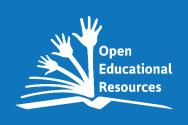
Academic institutions are searching for ways to alleviate the financial burden that the increasing cost of textbooks places on their students. The average student spends $1200 annually for books and supplies, according to the Open Textbook Network. Science textbooks are especially expensive, but OERs, or Open Educational Resources, are gaining acceptance as alternatives to traditional textbooks (Open Textbook Network, 2017).
OERs have been receiving national attention through open textbook initiatives at several academic institutions. There are libguides and library websites on the topic of OERs, which are good resources for basic information, as well as for guidance on initiating a program at your own institution. A few institutions with open textbook initiatives include the University of Hawaii, Kansas State University, University of Maryland, University of Massachusetts at Amherst, University of North Carolina at Greensboro, and Rutgers University.
Sources of OERs are growing as well. There are several multi-disciplinary open textbook repositories that provide access to open textbooks and other educational resources. Here are just a few:
- Directory of Open Access Books The DOAB is run by the OAPEN Foundation; it is similar to the DOAJ. Publishers can submit their peer-reviewed and open license materials for inclusion.
- MERLOT II is run by the California State University system. “MERLOT is a curated collection of free and open online teaching, learning, and faculty development services contributed and used by an international education community.” (MERLOT, 2017).
- The Open Textbook Library is supported by the Open Textbook Network; it contains peer-reviewed academic textbooks (Open Textbook Library, 2017).
- OpenStax is a non-profit organization based at Rice University, and it provides open access peer-reviewed college textbooks (OpenStax, 2017).
In addition to the science texts and materials available in the above repositories, there are many helpful free science educational resources. Some of my picks are:
- The American Institute of Mathematics provides a selection of open texts in mathematics that have been approved by the AIM editorial board (AIM, 2017).
- ChemCollective is run by educators at Carnegie Mellon University, and it contains chemistry open labs, simulations, tutorials, and online courses (ChemCollective, 2017).
- MIT OpenCourseWare “MIT OpenCourseWare (OCW) is a web-based publication of virtually all MIT course content. OCW is open and available to the world and is a permanent MIT activity.” (MITOpenCourseware, 2017)
- NanoHUB is funded by the National Science Foundation, and contains computational nanotechnology simulation tools, online presentations, teaching materials, animations, short courses and more (NanoHUB, 2017).
- NCBI Bookshelf is provided by the National Center for Biotechnology Information, part of the U.S. National Library of Medicine, and it contains “free online access to books and documents in life science and healthcare.” (NCBI, 2017)
- PhET was started by Nobel Laureate Carl Weiman as a resource for physics instruction; it contains “interactive simulations for science and math” (PhET, 2017).
References:
American Institute of Mathematics. (2017). Approved Textbooks. Retrieved from https://aimath.org/textbooks/approved-textbooks/
ChemCollective. (2017). Home- Resources to Teach and Learn Chemistry. Retrieved from http://chemcollective.org/home
Mello, J. (2017). OER Global Logo [digital image]. Retrieved from http://www.unesco.org/new/en/communication-and-information/access-to-knowledge/open-educational-resources/global-oer-logo/
MERLOT II. (2017). MERLOT- Home. Retrieved from https://www.merlot.org/merlot/index.htm
MIT OpenCourseWare. (2017). About OCW. Retrieved from https://ocw.mit.edu/about/
NanoHUB. (2017). About Us. Retrieved from https://nanohub.org/about
NCBI Bookshelf. (2017). Bookshelf. Retrieved from https://www.ncbi.nlm.nih.gov/books/
Open Textbook Library. (2017). Open Textbooks. Retrieved from https://open.umn.edu/opentextbooks/
Open Textbook Network. (2017). Impact and Benefits. Retrieved from https://research.cehd.umn.edu/otn/impact-and-benefits/
OpenStax. (2017). About Us. Retrieved from https://openstax.org/about
PhET. (2017). Interactive Simulations for Science and Math. Retrieved from https://phet.colorado.edu/
Awareness of OERs as a viable alternative to traditional textbooks is growing, but some faculty may still have concerns about their quality. These curated repositories and high quality science resources can help you make a case for OERs at your institution.
Laura Palumbo, Chemistry & Physics Librarian/Science Data Specialist, Rutgers University Libraries, New Brunswick, laura.palumbo@rutgers.edu
We welcome your comments and suggestions. If you have a resource that you would like to see highlighted please leave us a comment.


One thought on “Alleviating the high cost of science textbooks with Open Educational Resources”